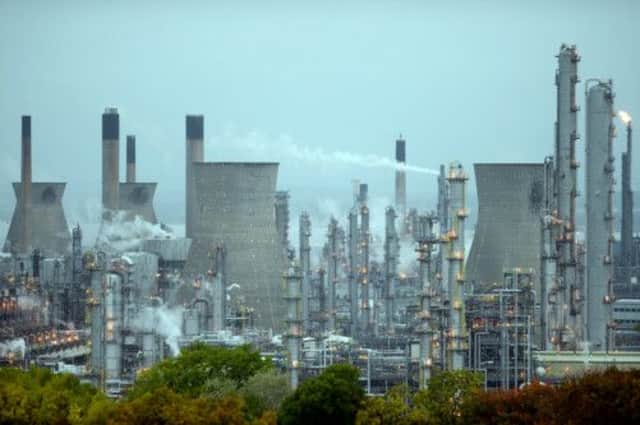Leaders: Grangemouth has far-reaching consequences


The origins of the dispute are difficult enough to divine. A bitter argument over the treatment of a Unite union official has become conflated with a doom-laden prediction by management that the Grangemouth site’s future is uncertain unless it can secure government support for a re-tooling of the plant costing hundreds of millions of pounds.
It has been unclear whether this was a labour dispute, an investment crisis or a question of political will on the part of the UK and Scottish governments. Or, if all three, how they were related.
Advertisement
Hide AdAdvertisement
Hide AdBut recently events have become even more mystifying. Negotiations between Ineos management and unions, brokered by the conciliation service Acas at the request of ministers, got nowhere despite hours of talks.
Then the union called off a planned 48-hour strike, apparently over concerns about the long-term economic and safety difficulties a shut-down would cause.
One might imagine that the calling off of a strike would mean the plant would remain open as normal. But no, managers say they are continuing with the planned shut-down prompted by the strike threat. They say the plant will be shut down until at least next Tuesday. They say complicated procedures like a shut-down take time; it is more than just flicking a switch and it is dangerous to keep turning it on and off. But they have also said that they are looking for longer-term commitments from the union on industrial action before they begin to bring Grangemouth back to normal.
All of this matters more than your average run-of-the-mill industrial dispute. Grangemouth accounts for a disproportionate amount of Scotland’s output, and the whole of Scotland – and much of the north of England – depends on the fuel it produces. Moreover, thousands of jobs, both directly in the Central Belt and indirectly in related industries and suppliers, depend on Grangemouth surviving and thriving.
The stakes are too high for there to be a lack of clarity as to motives in this dispute. Yet at every turn the bad blood, antagonism and distrust have been all too apparent. The tying by Ineos of the re-starting of the plant to reassurances over future industrial action means that management is using the shut-down as leverage in its negotiations with the unions, an unusual, antagonistic and high-risk strategy.
Last night the two sides exchanged insults, with the unions accusing the company of economic vandalism, and managers saying the unions had jeopardised the Grangemouth site’s future. It is hard to escape the conclusion that the whole saga has been woefully mishandled, with potentially far-reaching consequences.
East meets West in tweedy Tokyo
WHAT links the bustling, futuristic streetscape of Harajuku in downtown Tokyo with the bare, sparse and windswept Hebrides? The answer, it seems, is Harris tweed.
This most traditional of Scottish exports has been through various stages of reinvention down the years – it has been used in Nike trainers and is periodically picked up by fashion designers as diverse as Chanel, Alexander McQueen and Ralph Lauren.
Advertisement
Hide AdAdvertisement
Hide AdNow, as we report today, its latest incarnation is as the fabric of choice in the most style-conscious corners of Japan.
The new owners of the Harris tweed industry say the appeal is partly down to the Japanese love of craftsmanship, and partly down to a fascination with tweed’s history, clothing both aristocrats and factory workers for more than a century.
But the fashionistas in Tokyo have a more novel explanation, describing the muted colours of Harris tweed as the perfect clothing to wear to match the concrete of a modern metro-polis.
Whatever the reason, it is delightful to find a Scottish cultural staple being rediscovered by a new generation of consumers in a new market. It is a vote of confidence to the investors who have been determined to keep the Harris tweed industry alive, in the face of ownership difficulties and the large number of practical problems involved in producing a traditional product in a traditional way far, far away from its modern-day marketplace.
Authenticity is the hallmark of the best Scottish exports. But traditions are all the better when they are reinvented and newly appreciated by a new generation of consumer.